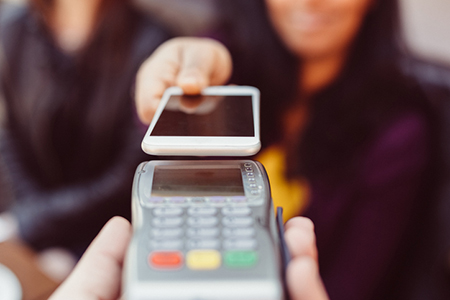
Why Paying With Your Phone Hasn't Gone Mainstream
If you leave your wallet or purse at home, you can still go shopping if you have your smartphone with you—that is, however, until you come upon a merchant that doesn’t accept mobile payments. Then you’ll have to trudge back home to get your checkbook, credit card or some cash for whatever you want to buy.
Apple, Google, Walmart, PayPal and other companies offer mobile payment apps that can make paying for something as easy as swiping your phone across a scanner. If you’ve ever paid for a drink at Starbucks with its app on your smartphone, you know how easy it is to use.
The mobile payment market in the U.S. is expected to grow to as high as $210 billion in 2019, but so far it hasn’t hit the mainstream yet. Here are a few reasons why:
Too Many Choices: Apple Pay, Google Wallet and Samsung Pay are big tech companies hoping that their system sticks with consumers, but there are also banks, such as Chase and Mastercard’s MasterPass, and retailers, such as Starbucks and KFC, that offer mobile payments. Downloading apps without knowing before you get into a checkout line which one, if any, will work can be a hassle.
Little Incentive: Using cash or a physical credit card can be a lot easier than finding which app to use at which store. Until more retailers accept all forms of mobile payment, or one mobile payment system stands out among the crowd, consumers may just go with what they’ve been using for years already.
Some stores try to increase incentives by tying apps to their loyalty programs, giving them extra rewards points for using their app.
Security: Mobile apps may be promoted as being more secure than a credit card, but ID thefts and retail hacks can make consumers question how safe they are. One in four millennials are abandoning mobile payments due to security concerns, according to a survey by VocaLink.
Some companies are trying to fix this. Apple Pay and Google Wallet use something called token-ization to make them safer to use. They don’t store a consumer’s actual credit card information. Some phones require two-factor authentication or a fingerprint as another layer of security.
The VocaLink survey also found that millennials felt strongly about their bank as the preferred provider of mobile banking services. That may be the place where you want to try out mobile finances first: your bank’s app.